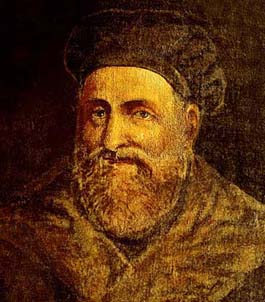Since it's #InternationalMensDay, here's a thread of every part of the gynaecological anatomy that is named after a man, with a bit of trivia about each man. Some of the bits are very specific. Before you ask, there are no parts of the gynaecological anatomy named after women...
GABRIELE FALLOPPIO (circa 1522-1562)🇮🇹 is the namesake of the Fallopian tubes, the tubes between the ovaries and the uterus. You can also call them the ovarian tubes or uterine tubes. 

Falloppio found himself caught up in a row with fellow anatomist Realdo Colombo about who had discovered the clitoris (in fact, neither of them had), which raged for years after both men had died.
CASPAR BARTHOLIN THE YOUNGER (1655-1738)🇩🇰 is the namesake of Bartholin's glands, the glands on either side of the vaginal opening which lubricate the vagina during arousal. You can also call them the greater vestibular glands.
Bartholin came from a dynasty of scientists, and sometimes the discovery of the gland is mistakenly credited to his grandfather, Caspar Bartholin the Elder, who left medicine to become a theologist.
ERNST GRÄFENBERG (1881-1957)🇩🇪 is the namesake of the G-spot, the sensitive spot on the front wall of the vagina. The G-spot isn't a true anatomical feature - some people feel it and some don't. It's where the urethra meets the crura and bulbs of the clitoris. 

Gräfenberg didn't actually "discover" the G-spot at all, someone else in this thread has a better claim to first writing it up. He did, however, invent the first widely-used IUD.
HERMANN TRESCHOW GARTNER (1785-1827)🇩🇰 is the namesake of Gartner's duct, an embryonic remnant of where testes would have gone had they developed, located in the broad ligament of the uterus. It sometimes gets cysts, which is why it's medically relevant.
You can also call it the ductus longitudinalis epoophori. Throughout his career, Gartner alternated between being a military surgeon, and working in academia in Denmark, London and Scotland.
DAVID BERRY HART (1851-1920)🏴 is the namesake of Hart's line, the edge of the vulval vestibule where you see a change in skin texture from the rougher skin of the labia minora to very smooth skin of the vestibule.
Hart was a prolific writer on obstetrics and gynaecology, starting strong by winning a gold medal and a fellowship for his doctoral thesis on the structure of the pelvic floor.
REGNIER DE GRAAF (1641-1673)🇳🇱 is the namesake of Graafian follicles, the cellular aggregations with the potential to release an egg which make up much of the ovaries. They're also known as ovarian follicles. 

Graaf himself pointed out he wasn't the first to describe them and others had noticed it before.
He was, however, one of the first to describe female ejaculation and the sensitive spot on vaginal front wall which became known as the G-spot, after an entirely different physician beginning with G (see above).
JAMES DOUGLAS (1675-1742)🏴 is the namesake of the pouch of Douglas, a part where the peritoneum extends between the rectum and uterus. You can also call it the rectouterine pouch.
Douglas was a well-known "man-midwife" who once disproved a hoax that a woman was giving birth to rabbits. Also named after him are: douglasitis, a Douglas abscess, the Douglas fold, the Douglas line, the Douglas septum, and @Hannahgadsby's dog.
JOHANNES PETER MÜLLER (1801-1858)🇩🇪 is the namesake of the Müllerian ducts, the paired ducts in an embryo which develop to become the ovarian tubes, uterus, cervix and upper portion of the vagina. You can also call them paramesonephric ducts.
The son of a shoemaker, Müller was originally going to become a saddler. He then went to college to become a priest, discovered a gift for research, pivoted to medicine, and ended up writing in the fields of anatomy, physiology, comparative anatomy, herpetology AND ichthylology.
ALEXANDER SKENE (1837-1900)🏴 is the namesake of Skene's glands, a pair of glands on either side of the urethral opening which secrete a fluid during arousal and orgasm ("female ejaculation"). You can also call them paraurethral glands. 

Skene was close friends with John Marion Sims, the so-called "father of modern gynaecology" who undertook human experimentation on enslaved Black women. A keen sculptor, Skene made a bust of his pal. 👀
Sadly, the history of gynaecology is NOT made up of nice people.
Sadly, the history of gynaecology is NOT made up of nice people.
And that's all the men after whom your bits, some of which are very, very specific indeed, are named.
• • •
Missing some Tweet in this thread? You can try to
force a refresh









